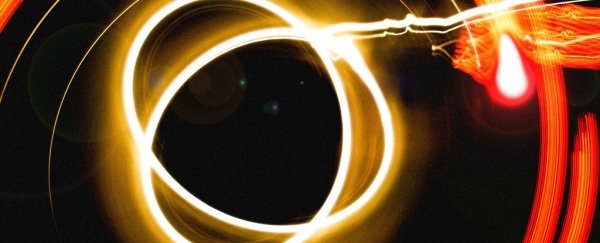Back in April, the physics world freaked out when scientists confirmed that they'd made the first direct observation of a brand-new state of matter - known as quantum spin liquid - for the first time.
But now a team of physicists has just announced that they've observed quantum spin liquid state again… and this time in a material where it should be impossible.
The discovery could change our understanding of how to make quantum computing work.
"We have proved empirically that interesting quantum states like spin liquids can also occur in considerably more complex crystals with different constellations of magnetic interactions," said lead researcher Christian Balz, from the Helmholtz-Zentrum Berlin für Materialien und Energie (HZB) in Germany.
"This could be important for the advancement of quantum computers in the future because spin liquids are one of the possible building blocks for carrying the smallest unit of quantum information, known as a qubit," added one of the senior researchers Bella Lake.
Let's back up a second, because all this isn't as confusing as it sounds.
Spin in the quantum world doesn't actually mean an electron is physically spinning. It refers to a type of intrinsic angular momentum that simply describes how an electron is behaving. In quantum computing we often simplify this by saying the spin state is down, up, or in superposition (both at the same time).
Quantum spin liquid is a state of matter that, very simply, occurs when the spin of electrons continue to fluctuate in a fluid manner even at very low temperatures, when they should be frozen in place.
It's like atoms inside regular materials. When they're in a fluid state, they're moving freely. But when temperatures drop, they'll freeze in place in a solid arrangement. That should happen with spin orientation in magnetic materials, but in quantum spin liquid state, it doesn't.
Even though it was predicted in 1973, the new state of matter was only observed for the first time this year, in a two-dimensional, graphene-like material.
That discovery made a lot of sense, because the material fit our understanding of how spin liquid state arises.
Basically, the criteria is that a material has to have has anti-ferromagnetic - or antiparallel - interactions, which, as the name suggests, is the opposite to ferromagnetic interactions in materials such as iron and nickel.
It means that if one electron has a 'down' spin, the one next to it has to have an 'up' spin, and so on.
Anti-ferromagnetic materials on their own don't necessarily enter quantum spin liquid state, unless they also happen to have a triangular atomic arrangement, which makes this alignment impossible.
So, just imagine three atoms at the corner of a triangle - they're never all going to be in parallel alignments because as soon as one changes to match the one to its right, the one on its left will have to change, and so on and so on. They'll keep flipping their alignment even at absolute zero temperature - hence, quantum spin liquid state.
But the new research suggests that our criteria isn't quite right, because the German team were able to observe the new state of matter occurring in a material that doesn't fit that profile.
The material in question is a monocrystal of calcium chromium oxide (Ca10Cr7O28).
Calcium-chromium oxide is made up of what are known as Kagomé lattices - named after the pattern of triangles and hexagons woven in Japanese baskets.
Basically that means the material has a complex mix of anti-ferromagnetic interactions, but also much stronger ferromagnetic interactions, which, according to conventional understanding, should prevent quantum spin liquid behaviour.
But through a range of scattering and spectrometry experiments in Germany, France, England, Switzerland, and the US, the team was able to show that this wasn't the case - quantum spin liquid state was happening even at temperatures as low as 20 millikelvin (around –273 degrees Celsius).
So what's going on here? Fortunately, the team has already come up with a hypothesis to explain why this material could behave like a quantum spin liquid without breaking our conventional understanding of the state of matter.
Using numerical simulations, they've shown that competition is the key to the strange behaviour - different magnetic interactions in the materials are competing with each other, and keeping the spins flip-flopping around.
You can see that happening in the illustration below, which shows the competing interactions on each atom (the grey and black balls). The green and red sticks represent ferromagnetic interactions, while the blue sticks represent anti-ferromagnetic interactions, which are forcing the spins to keep changing.
 HZB
HZB
"The work expands our understanding of magnetic materials, and also shows us that there are potentially far more candidates for spin liquids than expected," said Lake.
The research has been published in Nature Physics, and now needs to be verified by other teams before we say for sure that quantum spin liquid state can exist in these new types of materials.
But it's a pretty exciting study that hugely widens the potential pool of materials that we could use in future to build quantum computers. We can't wait to find out more.
